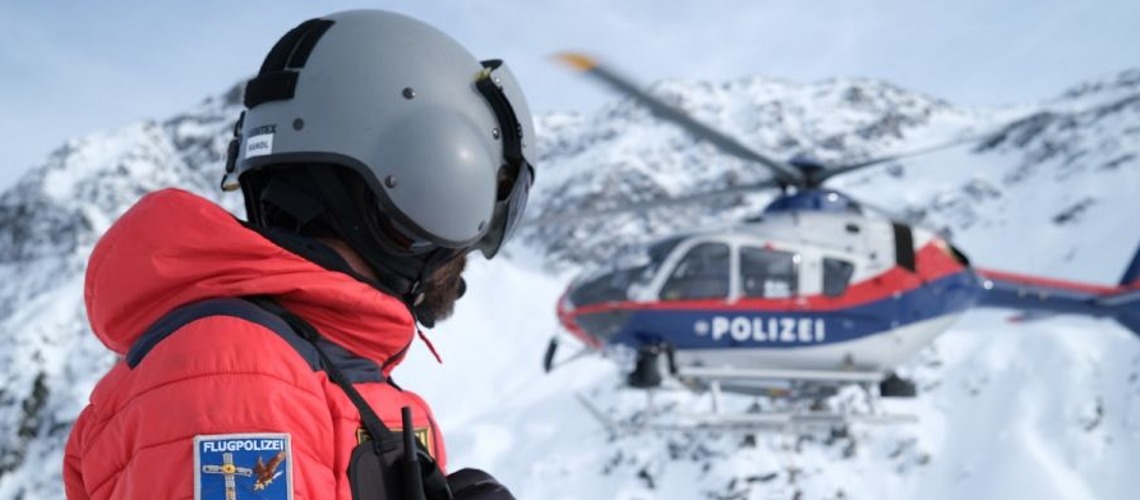Austrian Board of Trustees for Alpine Safety (OKAS) Release Alpine Accidents Stat' Review 2023/24

The Austrian Board of Trustees for Alpine Safety (ÖKAS) provides information about the preliminary Alpine accident statistics for the winter of 2023/24. The ÖKAS evaluated the Alpine accidents in Austria recorded by the Alpine police for the period November 1st, 2023 to April 1st, 2024.
Detailed evaluations of the respective disciplines as well as specialist articles can be found in analyse:berg, the ÖKAS specialist magazine published twice a year. The 26th edition of analyse.berg Winter 23/24 will be published in May 2024 and provides statistics with all the details, as well as interesting accident analyzes from different perspectives.
The number of alpine deaths in winter 2023/24 is the 10-year average
As the Alpine accident statistics show, 106 people died in Austria's mountains between November 1st, 2023 and April 1st, 2024. This number is only slightly below that of the 10-year average (109) and the winter 2022/23 (107). During the period under review, 86 men (81%) and 19 women (18%) had fatal accidents on the mountain. No gender was specified for one Alpine death (1%).
However, the accidents of the past few days show that winter is not over yet! Particularly at higher altitudes, mountaineers encounter challenging touring conditions which require solid tour planning and a good assessment of the sources of danger. For high-altitude tours, changes in the high Alpine mountains must be taken into account in the tour planning.
Number of accidents and injuries initially* slightly above the 10-year average
In winter 2023/24, 5,173 people were recorded as injured in the Alpine accident database (10-year average: 4,926; 9-year average without COVID winter 2020/21: 5,294). In total, there were 7,517 accidents (dead, injured, uninjured; 10-year average: 7,339; 9-year average: 7,877) and 4,831 accidents (10-year average: 4,645; 9-year average: 7,517) in the winter of 2023/24. 4,957) registered.
As has often been stated in the ÖKAS press releases, the gender ratio among those injured is more balanced than among those who died in the Alps: 54% of those affected were male, 44% female. For two percent of the injured, there is no information about gender in the alpine accident database.
The proportion of uninjured people is 30%. In 2023/24 there were 2,238 people, the 10-year average is 2,305 people (9-year average without COVID winter 2,472). Uninjured people who make an emergency call are in awkward situations, are overwhelmed by the circumstances of a tour or the conditions, or have overestimated themselves. In the slope/ski route discipline, which is very dominant in winter (63% of accidents), uninjured people mostly result from accidents that are caused by a collision or near-collision and in which not everyone involved is injured.
Federal state comparison
The comparison between federal states shows that, as in previous seasons, the most Alpine accidents occur in Tyrol (45% of accidents; 29% of deaths).
Origin
All fatalities come from Europe. Most of the alpine deaths (56 or 53%) in the 2023/24 winter season were Austrians (10-year average: 59%), followed by Germany as the country of origin with 25% or 27 deaths (10-year average: 21 %).
The majority of fatal accidents in 2022 (60% or 172) come from Austria (average 10 years: 61%), followed by neighboring Germany with 26% or 73 deaths (average 10 years: 24%).
Discipline and time period
- Most alpine deaths occurred on slopes and ski routes in the winter of 2023/24 (26; 10-year average: 27; 9-year average without COVID winter 29). The further order: (ski) tour (20; 10-year average: 17), hiking/mountaineering (16; 10-year average: 18), forestry accident, etc. (11; 10-year average: 10) and aviation accident (10; 10-year average: 2). 7% (7) of the people who had fatal accidents died by suicide in the mountains.
- The highest number of deaths (74%) were recorded in the months of January, February and March. A similar picture emerges among the accident victims. Most people (63%) had an accident in the months of January and February.
Old
Half of the Alpine deaths were between 51 and 70 years old. In contrast, there is a much more even distribution of accident victims across all age groups, with the 11-20 year old age group making up the most accidents (19%) and the 51-60 year old age group making up the second most accidents at 17%.
Causes of accidents
- The evaluations by the ÖKAS/BMI show that among the accident victims, the percentage of accidents caused by collisions - mostly on slopes and ski routes - is the highest at 60%. The next most common cause of accidents is falls/trips/slips at 16%. Worth knowing: The alpine police only record accidents in the area of slopes and ski routes where there is suspicion of third-party negligence.
- As in previous seasons, cardiovascular disorders (27%) are the most frequently cited cause of accidents or emergencies when it comes to alpine deaths (10-year average: 23%). That's 29 people who died in the winter of 2023/24 due to internal emergencies in Austria's mountains. 14% (15) of alpine deaths died after a “fall, trip, slip” situation.
- The majority (69%) of victims due to cardiovascular failure are in the 51 to 70 age group.
* the numbers may increase by approx. +10% due to additions. The query time is close to the observation period.













